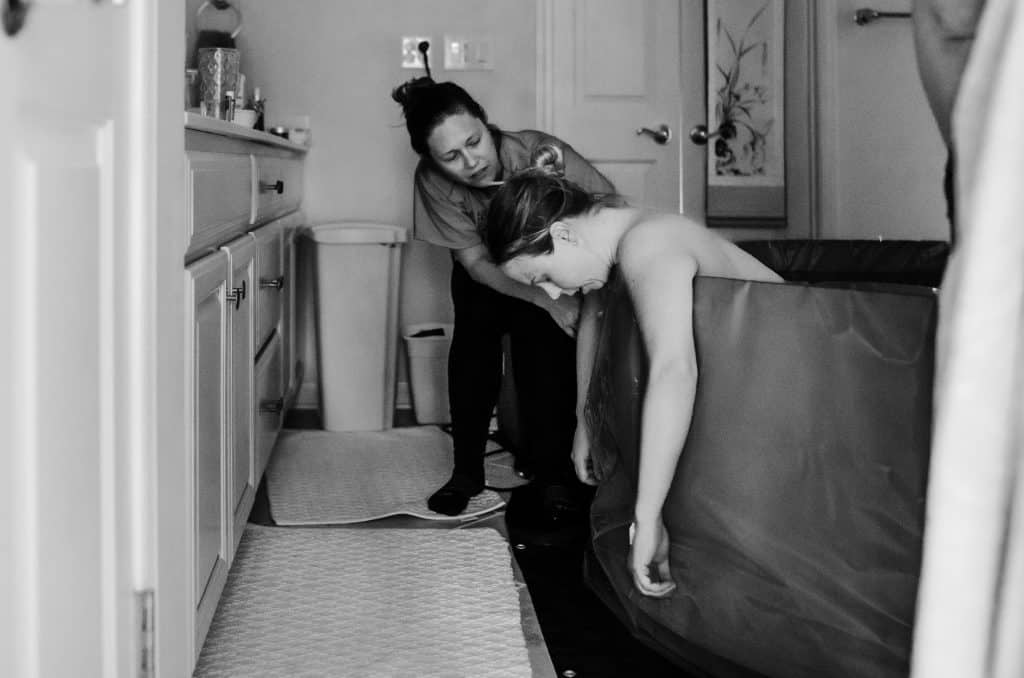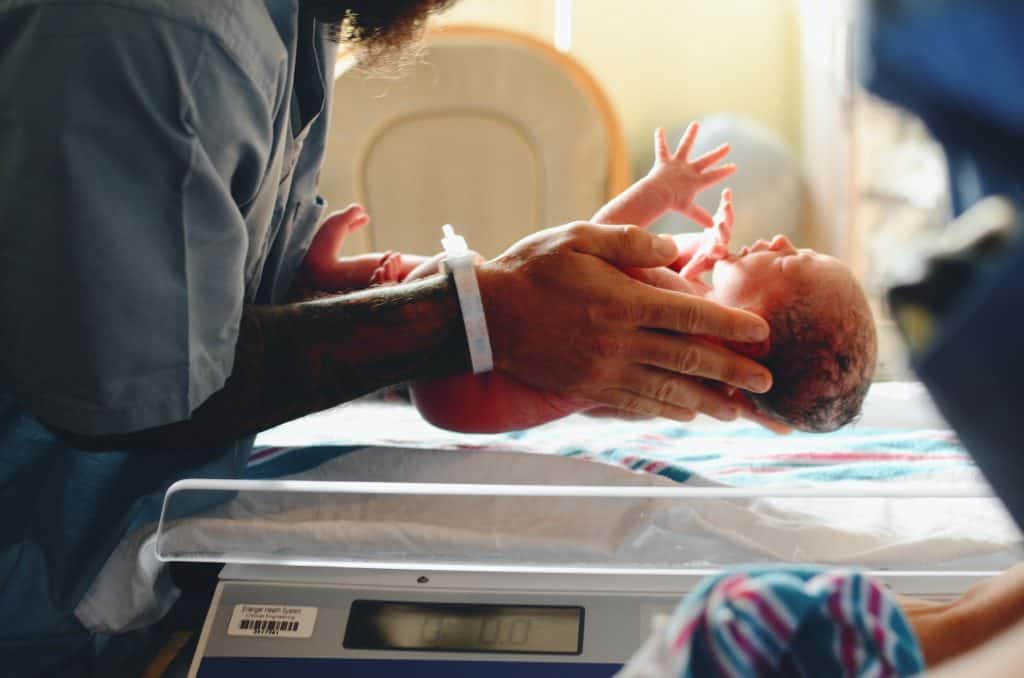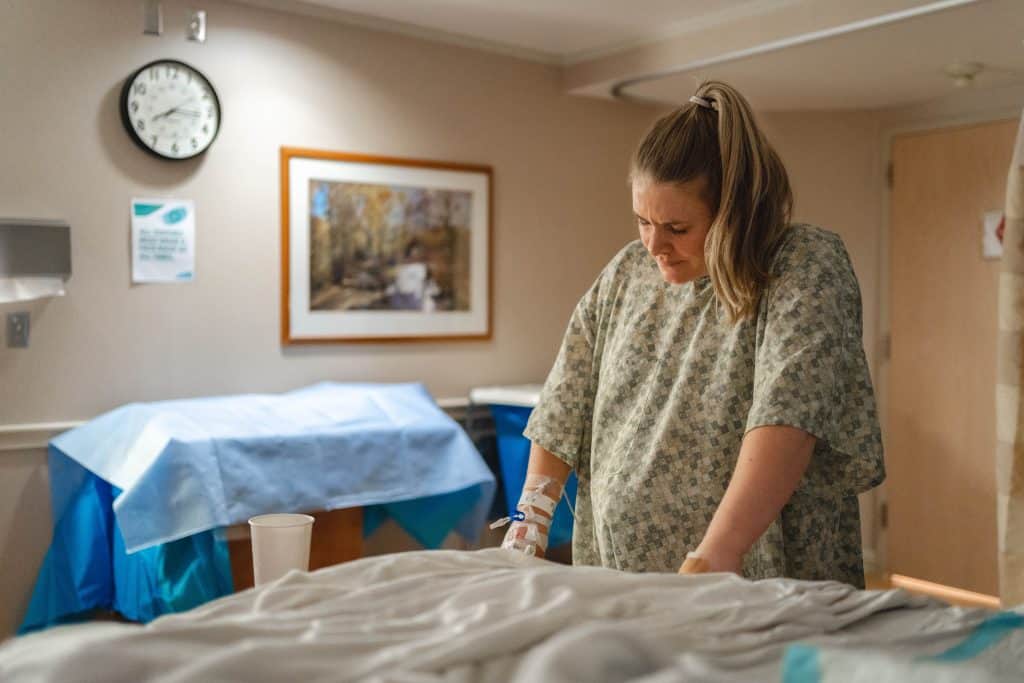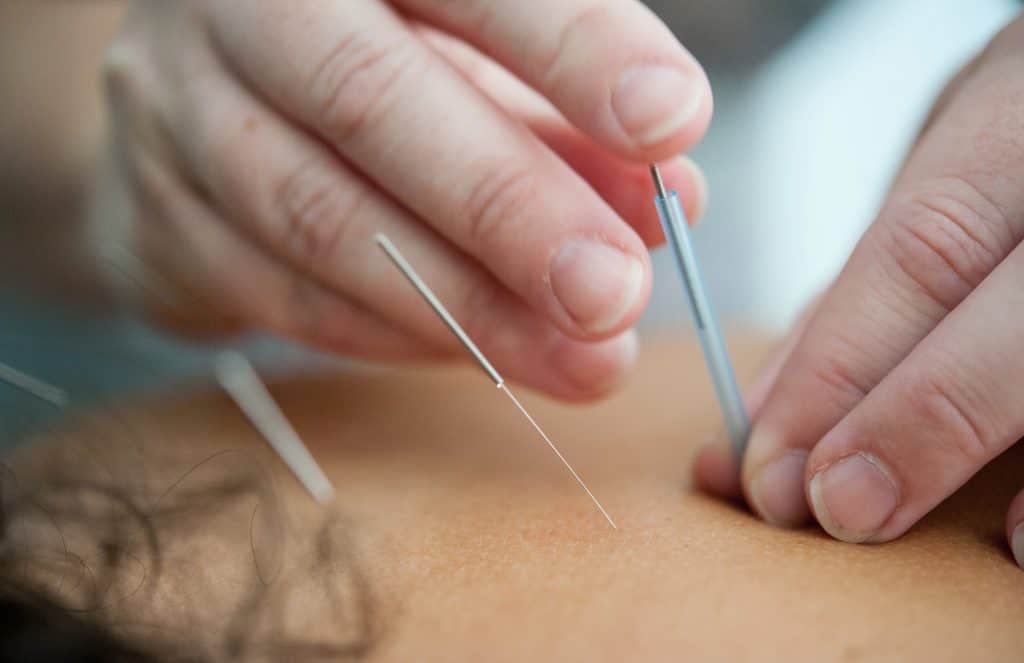While being pregnant has its distinct pros (like being able to eat all the ice cream you want), there will come a time when you’re 100 percent over being pregnant. For most women, it’ll come at around 37 weeks, or at whatever stage moving starts to feel impossible.
However, some women will remain pregnant for weeks after they hit that wall. At your 40-week appointment, your doctor may suggest that you start thinking about induction, because for some reason, your baby is just too comfy in your womb. Which is where the option to a membrane sweep might come up for the first time.
A membrane sweep may sound totally gross and a little scary, but if you’re nearing (or past) full term and ready to evict your little cherub through all necessary means, it might not be the worst idea as a way to induce labor.
Stripping membranes is a relatively common procedure, but is it really all its cracked up to be? To find out, we spoke to mamas, doctors, doulas, and other pregnancy experts to get the real scoop on membrane stripping.

What is membrane stripping?
Here’s the thing: a membrane sweep (also known as membrane stripping) isn’t exactly a day at the spa. But what really happens when they strip your membranes?
“Membrane stripping is a mechanical method of labor induction used between 38 and 40 weeks gestational age to prevent post-term pregnancies (after 41 weeks gestation),” says Tami Prince, MD, the founder of the Women’s Health and Wellness Center of Georgia.
“An OB-GYN will insert a finger into the cervix and sweep between the membranes of the amniotic sac in an effort to separate the sac. This action increases endogenous production of prostaglandins, oxytocin, and phospholipase A which help to soften and dilate the cervix.”
In layman’s terms: you know how your OB provider typically does weekly cervix checks toward the end of your pregnancy to check dilation and effacement? Well, a membrane sweep is kind of like that.
Think back to the female anatomy poster in your OB-GYN’s office. The cervix is essentially the gateway to the uterus. There’s the external orifice, which is where the doctor will insert their finger. Things get uncomfortable when the doctor has to reach for the internal orifice, where the membranes of the amniotic sack, also known as the bag of waters, is attached to the uterine wall.
Your doctor will then gently sweep their fingers back and forth (FYI: It does not feel gentle) to try to separate the membranes from the uterine wall, which tells your body it’s go time. The idea is that stripping membranes kick-starts labor, so unlike a medicated induction, your labor will still start semi-spontaneously after a membrane sweep.

Does stripping membranes work?
“The jury is still out on the effectiveness of membrane stripping alone,” Prince tells HealthyWay. “Efficacy depends on gestational age, with it being low at an earlier gestational age and increasing after 38 weeks.”
So what does the research really tell us about the efficacy of membrane sweeping? According to one 2010 study involving 30,000 women in 22 trials, “routine use of sweeping of membranes from 38 weeks of pregnancy onwards does not seem to produce clinically important benefits.”
Basically, results showed that membrane sweeping didn’t induce labor in enough cases to warrant its recommendation as a regular induction method. The 2010 study focused on women who were at full-term pregnancies, between 38 and 40 weeks.
That said, another study found that membrane sweeping actually was successful in late-term pregnancies, or those lasting longer than 41 weeks, and significantly reduced the need for other induction interventions.

Membrane Sweep: Pros and Cons
1. Pros of Getting a Membrane Sweep
The information presented in different reports can be confusing, but basically, if your body is poised for labor, stripping membranes will be more likely to induce labor. If you have it done too early, though, it may not work—and it may increase the need for other interventions later.
Prince says that despite the conflicting data, research does show that stripping membranes is safe and comes with minimal risks. Since a membrane sweep is a low-risk procedure, it is often touted as a ‘natural’ alternative to induction with oxytocin or vaginal prostaglandins.
Another benefit of membrane stripping is that it can usually be done in your provider’s office, unlike other pregnancy interventions, like versions, which must be done at the hospital.

2. Cons of Stripping Membranes
While they’re rare, there are some risks associated with stripping membranes. “During the stripping process … the physician could inadvertently place a finger through the amniotic sac as opposed to between the membranes, causing a rupture of membranes,” explains Prince.
“Once membranes rupture at term, labor must be augmented if a woman is not already in active labor. Also, stripping may involve mechanical dilation of an unfavorable cervix. The cervix is highly vascular and bleeds easily during pregnancy so women may experience light spotting afterwards.”
What does Prince mean by ‘augmented’? Basically, if the doctor accidentally ruptures the amniotic sac while stripping membranes, it means you may end up having an emergency c-section. This is a worst-case scenario, however. More often, doctors worry about introducing bacteria into your cervix while stripping membranes, resulting in an infection that could complicate labor and delivery.
To avoid infection, your doctor will check to see if you are GBS positive. Group B streptococcus is a type of bacterial infection that about 25 percent of all healthy women carry, and while it’s rare, it can pose serious risks as it can be passed to your baby during delivery.
Doctors routinely screen for GBS after the 35th week of pregnancy. If you test GBS-positive, talk to your doctor about what’s right for you. According to a 2015 study, stripping membranes of GBS-positive women posed no threat to the baby or mother, so your doctor may go ahead with the procedure, but it’s a decision you should make together.

Does stripping membranes work?
With all of these mixed reviews, does the procedure of a membrane sweep actually work? We asked real women about their experiences with membrane stripping.
1. A membrane sweep is painful.
“I was 41 weeks pregnant—first pregnancy—by the time I had my membranes stripped,” says Kayla Hanks, first-time mom from Virginia Beach, VA. “I remember my mother coming into town and [being] ready for my son to be here. Honestly, I feel like the pain [of membrane sweeping] was akin to labor itself! It took my breath away. I remember having some spotting after but [my OB] warned that it can happen.
Stripping my membranes sent that early labor into overdrive (at least in my mind)! I stayed home until around 2 a.m. when my water finally broke. When we got to the hospital, they said I was only 3 centimeters along! Would I do it again? Only if it were necessary. I understand I was 41 weeks and in my first pregnancy, but it HURT!”

2. You can say no.
Ashley Phillips, a veteran mom of two, had a membrane sweeping procedure during her first pregnancy, and explains that her doctor didn’t exactly give her a choice: “At my 39-week appointment, the doctor just told me he would be stripping membranes to try and induce labor, and because it was my first pregnancy, I didn’t know I could say no. It was a really painful experience, and I bled a lot after, almost like a light period. And I still didn’t go into labor!”
3. It will work if your body is ready.
“I had my membranes stripped with my daughter, Cameron, twice,” says Jessica Stafford, who delivered each of her three children vaginally. “Each time it did nothing but cause pain and cramping. I didn’t do it with Clayton and don’t regret it, but I did do it with my third, Cohen and he was born the same day. In my experiences, it will only work if your body is ready for labor.”
4. It hurt, but got the job done.
Tracy Jarrell, mom to 1-year-old Naomi, says, “My labor started about 12 hours after having membranes stripped. Not the most comfortable procedure…but it did get my labor started.”

Membrane Sweep Alternatives
If your pregnancy is at full term and you’re ready to meet your baby, there are less invasive ways to get labor started than membrane stripping.
1. Sexy Time
So let’s start with a fan favorite: getting it on to get your labor on. Many women will personally swear this works for labor induction.
You may not feel like having sex at 39-, 40-, or heaven forbid, 41-weeks pregnant, but coitus (especially if you orgasm) can actually stimulate labor by triggering uterine contractions, according to a 2014 study. Plus, it’s likely the last time you and your partner can be intimate for the next six weeks, so make sure to really enjoy your sexy time together.
2. Nipple Stimulation
Another proven method of labor induction is through prolonged nipple stimulation. I first read about this method of labor induction in Ina May Gaskin’s Ina May’s Guide to Natural Childbirth.
According to Gaskin, “Nipple stimulation causes the release of oxytocin into the maternal bloodstream, and this oxytocin the stimulates contractions of the uterine muscles. Both manual and oral stimulation are effective at stimulation … Breast stimulation is especially effective in starting labor at term when it is combined with sexual intercourse.”

3. Acupuncture
Autumn Vaughn, a licensed acupuncture physician who specializes in prenatal and postnatal care, says that holistic providers really prefer not to use the term ‘induction’ and choose instead to focus on the long-term health of the mother and baby.
“Weekly acupuncture sessions can shorten the length of labor and reduce the need for pain-management interventions because it naturally helps prepare the body for labor by ripening the cervix, relaxing ligaments and tendons, and helps baby get into the right position for labor,” says Vaughn.
And while there isn’t a lot of scientific data to support efficacy of Eastern medical techniques, like acupuncture, to stimulate labor, one study did show that women who received acupuncture had shorter overall delivery times than those who did not. Another study published in 2015 showed that acupuncture during pregnancy was found to be completely safe, so there’s no harm in trying acupuncture as a holistic alternative to stripping membranes.

What’s the bottom line on stripping membranes?
Stripping membranes is most likely to be effective later in pregnancy, with the highest rates of efficacy after 38 weeks.
We get it. Pregnancy is hard. And when 37 weeks is technically considered full term, it’s ultra-tempting to schedule a membrane stripping procedure to help get that baby outta there as soon as possible.
Still, an astonishing amount of prenatal growth occurs in the final weeks of pregnancy, so unless there’s a true medical need for baby to be born sooner, it’s probably best for baby to bake until at least 39 weeks.
But, there are times when a scheduled birth is easiest for everyone. For military families, you may chose a scheduled induction so that your partner could be present for the birth because of impending deployments. Or a medical condition could prompt an early delivery that is in the best interest of both mother and baby’s health.
Ultimately, whether to have your membranes stripped should be a decision you and your doctor make together. If you feel at all pressured to have a membrane sweep done (or any procedure you don’t have a good feeling about during pregnancy) you should definitely seek a second opinion, because there are induction alternatives that may be just as efficient as stripping membranes at inducing labor. After all, the most important thing is making sure your little nugget is happy and healthy when they finally decide to make their debut.



